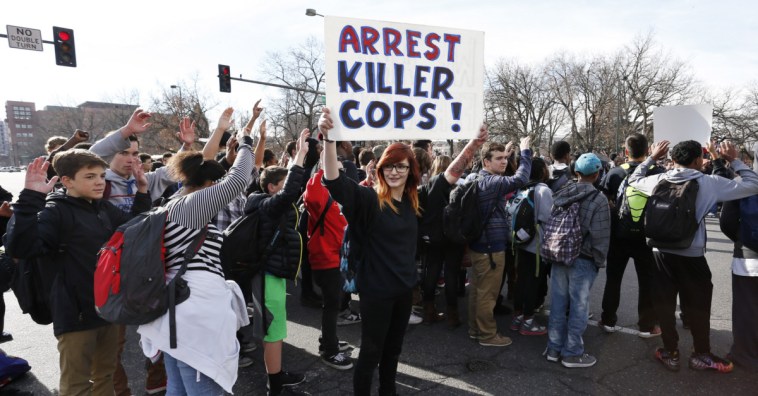On Monday, President Obama announced a forthcoming plan to curb the increasingly “militarized culture” among America’s police forces in wake of Michael Brown shooting. The reform is expected to take multiple forms, including an executive order streamlining military surplus gear programs available to local enforcement agencies (LEAs), Congressional funding for LEAs to purchase body cameras, and a Department of Justice guidelines restricting racial profiling.
Videos By Rare
From the perspective of limiting government power, the announcement is a mixed bag of promising solutions yet ultimately leaves the underlying problem unresolved. Here’s a breakdown the good, the bad, and the ugly of the president’s police reform plan:
1. The Good — $75 million for police training, body cameras
Any increase in federal spending should be met with an ounce of healthy skepticism, but at the very least the Obama administration is pushing for greater police accountability by encouraging LEAs to purchase body cameras. The president has asked Congress to approve a three-year program that would match state funding for body cameras up to $75 million. Although only a handful of LEAs currently use body cameras, several recent studies on the subject have remarkably encouraging findings. The most notable report on the first LEA to use body cams in Rialto, California found that officers with the cameras used force 59 percent less than those without them. Likewise, citizen complaints were reduced 87.5 percent for interactions with camera-carrying officers. While the $75 million program will come nowhere near equipping all of America’s police officers with cameras, at the very least it marks a shift towards greater accountability by encouraging use of the new technology.
2. The Bad — Increased funding for police training
While the $75 million body camera funding is encouraging, the proposal is actually part of a larger $263 million spending package to improve police training. This does little to tackle the problem of police militarization. Instead, it promotes a false idea that the trouble with America’s increasingly militarized police is solely improper training, throwing more money at the problem. LEAs are already imposing a hefty financial burden on states with generous public servant salaries and pension liabilities; burning more tax dollars — even in the name of improved training — will not make the situation any better.
3. The Ugly — Military surplus programs left intact
Not only will America’s police departments receive even more money, their access to paramilitary weapons and equipment will not be hindered at all. In the aftermath of the Brown shooting, many police reform advocates had hoped that the national attention would inspire lawmakers to call for an end to the Department of Defense’s 1033 military surplus program and others like it in other federal bureaus like the Department of Justice and Department of Homeland Security. However, police lobbyists seemed to have chilled any legislative movement to terminate said programs after prominent congressmen like Sen. Rand Paul called for their reexamination. A White House report released Monday at the very least promises to add some transparency to the programs by allowing civilian review of LEA requests for specific equipment. At the same time, however, the reforms could ultimately backfire by making it even easier for LEAs to access such equipment by creating one central database for such requests.
Ultimately, the reforms are months away from implementation, so the fate of the plan remains very uncertain. However, limited government lovers should not hold their breath for any major change for the better. While the encouraged use of body cameras does provide hope for better policing, the underlying problem of militarization will remain intact through continued operation of 1033 and similar programs.

